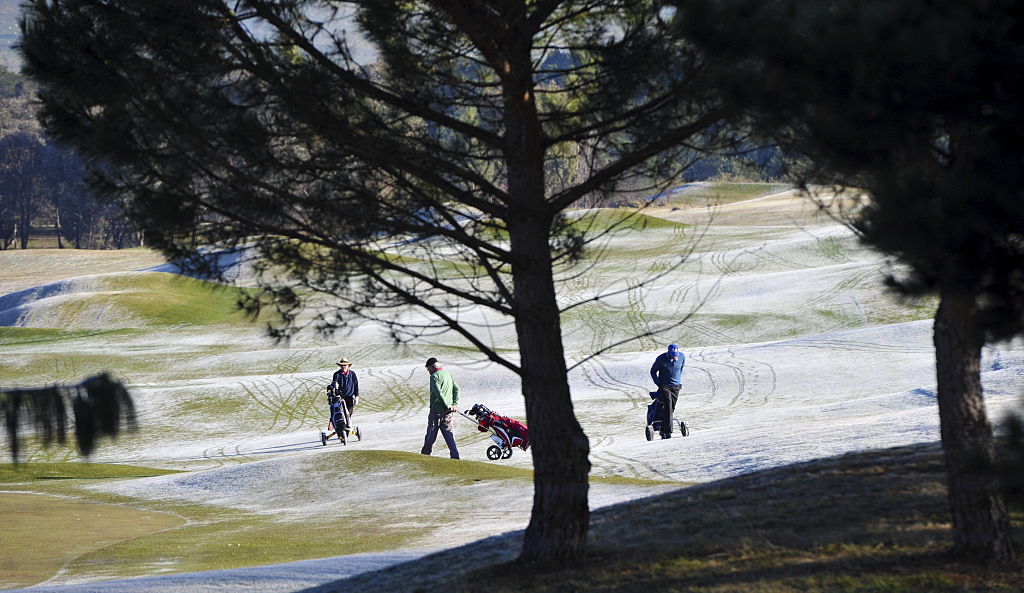There are GOLFNOW resources to assist you
In cold-weather climates, winter oftentimes ends and then cruelly changes its mind. Golfers who’ve been shoveling sidewalks and rolling puts on the den carpet fondly wish for a start to the season. The courses that do the best job of telling them winter is over and it’s safe to roll into the parking lot generally reap rewards for doing so. That’s been the longtime view of Dan Hardy, who covers the Great Plains region as a Senior Area Sales Manager for GOLF Business Solutions.
“A course’s best-practice at this time of year is to pick a date, do a full open, turn on the tee sheet, post times wherever you can get exposure for them, and reap the benefits,” says Hardy. “Courses that commit to a full open will always do more to promote themselves and boost utilization. A tentative open, the ‘maybe’ approach, puts doubt in peoples’ minds, and as a result you fall off their radar.”
Hardy can back up his words with real tools to help a client course navigate that dreaded return of chill and winter precipitation. He knows that when lousy weather comes roaring back, it’s something of an issue to have people on the tee sheet who need timely information about what’s going on.
“Obviously, course operators don’t want have to deal with those reversals, mainly because of the hassle of calling people back and straightening out the arrangements,” Hardy says. “For that they can rely on our GOLF Business Support department, or our Answers service. We’ll make the phone calls as soon we get word of a closure.”
Meanwhile, if you enthusiastically flip the switch sometime between St. Patrick’s Day and the Masters it may feel like you’ve got the market to yourself. “This time of year you get a shot at making new friends and gaining new customers,” Hardy points out. “It’s a great opportunity to perhaps land a lifelong customer.”
Bob Schulz agrees with Hardy’s point about expectations. “Golfers in cold-weather areas are thankful for the upbeat attitude of a full open and are not expecting mid-season service or mid-season rates,” according to Schulz, who is PGA Director of Golf at The Sanctuary Golf Course in the Chicago suburb of New Lenox, Ill.
Despite its reputation for fierce winters, Chicagoland can have spurts of mild weather in just about any month, and will sometimes deliver an early spring. When Schulz started at The Sanctuary 15 years ago the policy was full shutdown after Thanksgiving and no real hurry about opening back up at winter’s end.
“Those were the days when people like me could take a four-month vacation,” says Schulz. “Things are different now. Our course really doesn’t close in the winter. The Sanctuary did 770 rounds between Dec. 1 and the second week of March—which generated $11,560 in green fees, plus what we did in the grill and in merchandise.”
He says his best performance ever in that time period was over $40,000. “What public golf course wouldn’t want that bonus revenue?” he asks. “We’re full-time and we’re here anyway. All December we’re here doing gift cards. Most of the winter rounds are walking, so there isn’t a whole lot you have to do,” to service play.
The Sanctuary is aggressive with its tee-time marketing during peak and shoulder season—the annual goal is open the online tee sheet on March 1. But the course switches to a first-come, first-serve approach during periods when so many booked times get cancelled due to weather. And when it’s cold, it also gets dark early, so golfers often become concerned about a late-morning or early-afternoon time they’ve booked and call around trying to improve on it.
“It’s better that they just show up, come inside to pay, then go off the tee,” Schulz says.
He admits that if winter play led to serious turf damage he would have to change his approach, but that’s not the case. Only one of his greens gets a tarp cover, the rest keep their cups and flagsticks in place. Pitch marks are really a non-issue, given the frozen surfaces, and what few there are recover quickly when the April sun pours down and the grass jumps out of its dormancy. Even on those January days when carts are let out, Schulz and his crew don’t have to worry about damage to cart covers—the customers show up with cart covers they’ve actually purchased themselves—they bring their own heaters, too.
“People want to be outside, that’s really what we’re selling,” says Schulz. “Then they come inside, and we’re the place where they hang around to eat and drink.”
When the part of the year that most Midwestern people call golf season does arrive, his course already has momentum—this year’s Masters and the Tiger comeback only adding to it—plus a loyalty factor among golfers that translates to business success.


